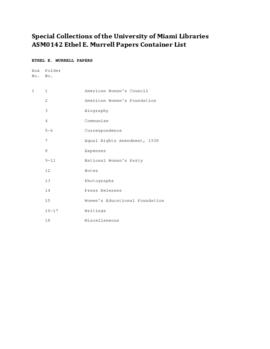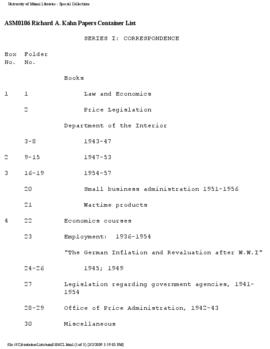The Bernhardt E. Muller collection is a compendium of newspapers, architectural drawings, renderings, and photographs related to the design and construction of Opa-locka, Florida, the nation’s largest concentration of Moorish Revival architecture. The city, incorporated in 1926, was the third Florida suburban real estate development of Glenn H. Curtiss, aviation pioneer and millionaire developer. Opa-Locka is the only known city in the United States that used Moorish Revival architecture as its original theme.
The contents of the Muller collection fall into two distinct groups: architectural materials related directly to buildings designed by Muller and his staff; and supporting materials presumably collected by Muller that pertain to his work and the city of Opa-Locka. The vast majority of these materials are directly concerned with Muller’s work in the Opa-Locka and Miami area between 1925 and 1928. Supporting materials, including magazine extracts, brochures, and newspapers, date mostly from 1926 and 1927, with a few items from 1928, 1930, 1959, and 1960.
The Muller collection’s importance concerns its detailed documentation of the progress of Opa-Locka from a developer’s dream to a constructed city. Opa-Locka was designed according to a specific theme: a combination of Arabic, Persian, and Moorish architectural styles. It is also the first known instance of a town developed from interpretations of a literary work, The One Thousand and One Tales of the Arabian Nights.
The collection contains construction documents, sketches, renderings, and photographs of Opa-Locka’s first buildings. Extensive material exists on the designs of the Opa-Locka Company’s administration building, now the City Hall, as well as plans for seventeen institutional and public projects, including the Archery Club, Bathing Casino, and Observation Tower, with unbuilt designs for a Golf Club, school, and Mid-Winter Southern States Exposition.
Eighteen commercial buildings are found in the Muller collection, including many stores and apartments, as well as an unbuilt Chinese hotel. Sixty-three private residences of various sizes and designs are included in these drawings. It is probably that most of the work Bernhardt Muller ever did for Opa-Locka is contained in the collection. The majority of these drawings and materials date from 1926 to 1927, with only three drawings dated later than 1927.
The Muller collection is significant for its documentation of the history and development of South Florida. The volume of work designed and media contents demonstrate and describe the magnitude of the Florida Land Boom, which peaked early in 1926, just as construction began on Opa-Locka.
The Muller collection contains newspaper articles describing the hurricane that struck South Florida on September 17 and 18, 1926. The storm’s direct effect was a loss of 372 lives and $159 million in property, but its long-term results included the onset of the land “bust” and an economic decline that preceded the Great Depression of the 1930’s. There are numerous articles and photographs of the hurricane's destruction.





